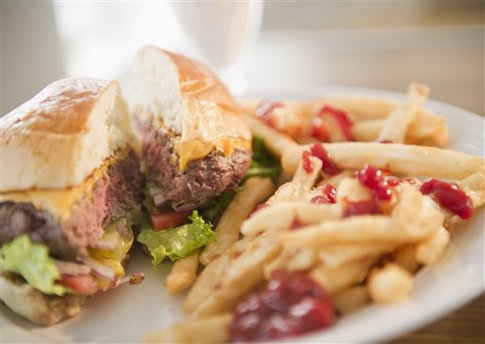New federal guidance meant to help businesses comply with the Obamacare calorie posting regulation has not made the rule any less "complex and burdensome," a group critical of the regulation says.
The 53-page document released by the Food and Drug Administration (FDA) this week says a coupon can be a menu and offers a 109-word definition of "restaurant-type food."
"FDA’s recent disclosure of guidelines regarding the menu labeling rule does not change the fact that the regulation remains expensive, ineffective, and unworkable," the American Pizza Community, which represents Domino’s, Papa John’s, and Little Caesars, said in a statement. "FDA’s five-month delay in providing this guidance confirms just how complex and burdensome their rules are, making compliance among small business owners both onerous and costly."
The rules were intended to be go into effect this year, but were delayed until December 2016 after complaints that businesses did not have enough time to comply. The latest guidance is intended to help restaurant chains understand the rules.
However, the document often provides lengthy pieces of advice that provide little clarification.
For instance, the FDA states that a restaurant would "likely not" have to list calories next to a picture of a combo meal if calories are listed somewhere else on the menu.
Violations of the regulation can carry a $1,000 fine or prison time. The FDA said they intend to work with state and local authorities to "ensure that implementation and enforcement of the menu labeling requirements are uniformly applied."
The definition for "restaurant-type food" is lengthy, beginning with "Food that is usually eaten on the premises, while walking away, or soon after arriving at another location."
The definition continues: "It may either be: (a) served in restaurants or other establishments in which food is served for immediate human consumption (such as food traditionally sold in restaurants), or sold for sale or use in such establishments (such as bulk items used to prepare restaurant foods); or (b) processed and prepared primarily in a retail establishment, ready for human consumption, of the type described in (a) of this paragraph and offered for sale to consumers but not for immediate human consumption in that establishment and not offered for sale outside that establishment."
Chains with 20 or more locations must comply with the regulation, and list total calories for every standard food item served. The document explains that bakeries, cafeterias, coffee shops, convenience stores, delicatessens, amusement parks, bowling alleys, movie theaters, ice cream shops, mall cookie counters, grocery stores, retail confectionary stores, and superstores also must comply.
The guidance does little to clear up its vague definition of what constitutes a menu. The document uses the same definition for menu as the final rule, which describes a "menu" as any writing that "can be used by a customer to make an order selection at the time the customer views the writing."
Restaurants complained that under this broad definition, television advertisements and flyers could be considered a menu. The guidance addresses this issued by stating that advertising and marketing materials "generally" would not be considered menus, but that coupons could be.
"[I]n the example of a pizza coupon that includes a phone number to place the order and that states ‘1 large pepperoni and sausage pizza $9.99,’ the ‘coupon’ can be used by a consumer to make an order selection at the time a consumer is viewing the coupon (i.e., the coupon includes the name of the standard menu item, price of the standard menu item and a phone number where an order can be placed)," the guidance stated. "Therefore, in this situation, the coupon would be considered a menu (and not simply a coupon) and would be required to include a calorie declaration for the listed standard menu item."
The FDA also broadened the definition of menu to include kiosks where customers can place a made-to-order sandwich at gas station chains such as Wawa and Sheetz.
The American Pizza Community is calling for Congress to pass the Common Sense Nutrition Disclosure Act (H.R. 2017), which would give businesses more flexibility in complying with the regulation. For instance, pizza chains would be able to continue offering calorie counts for the millions of topping combinations they offer through an online resource in order to meet the regulation’s requirements.
"The American Pizza Community looks forward to working with Members of Congress to ensure that this legislation is passed so that we can deliver accurate calorie information to our customers in a way that is useful and fits the unique needs of small business pizza restaurants," the group said.
The guidance did clarify that federal prison cafeterias would not be subject to the rules.
The document also rules out businesses using plus or minus signs to show added calories because symbols "could be confusing to consumers."
